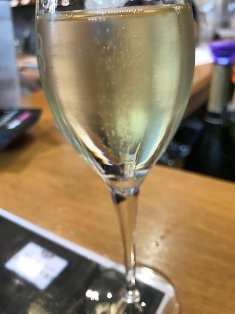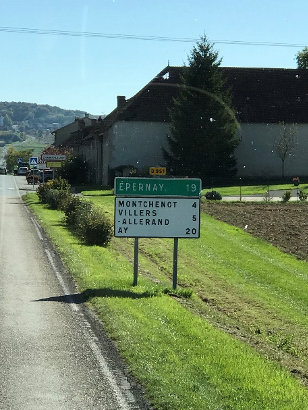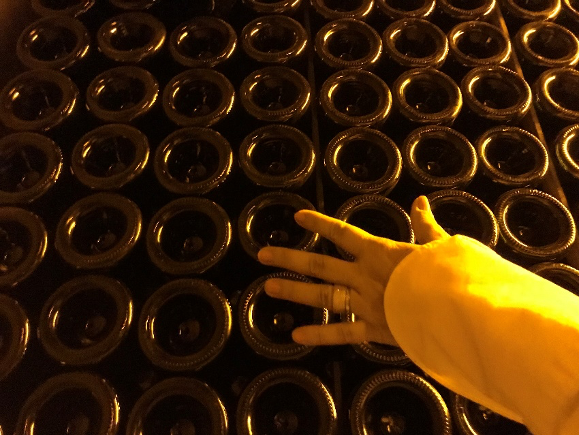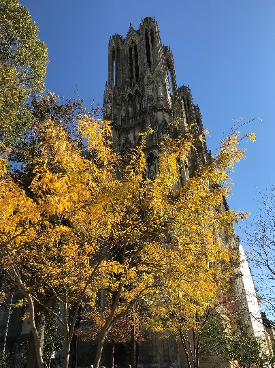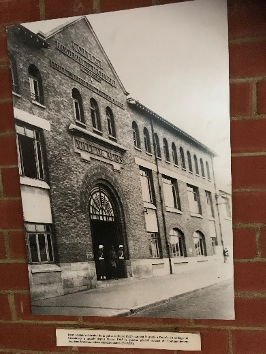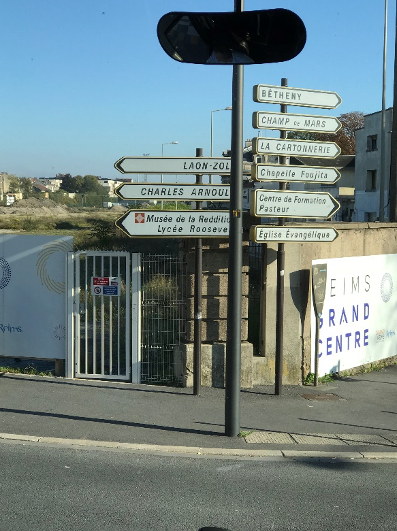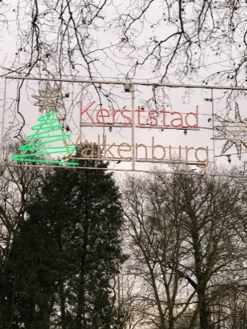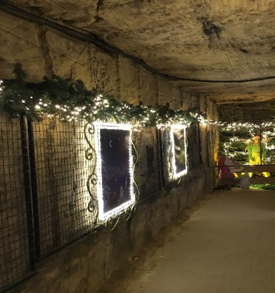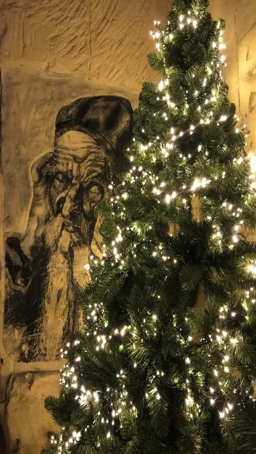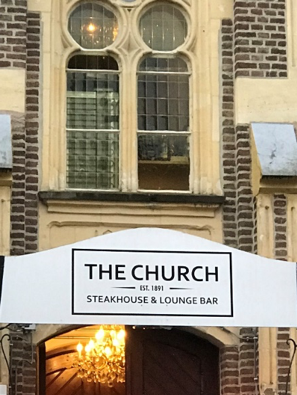|
Sparkling wine season is upon us and another reason to enjoy sparkling wines from around the world, and all year around. According to many wine aficionados, the mother of all Sparkling wines is Champagné, so one can imagine my thrill to enjoy a glass of Champagné in Champagné, France. The French Appellation d’Origine Contrôlée mandates the three grapes used are Chardonnay, Pinot Meunier and Pinot Noir. If only Chardonnay is used then it is called blanc de blanc. The appellations are Aube, Côte des Blancs, Côte de Sézanne, Montagne de Reims and Vallée de la Marne. The location of the vineyards (east, west, north, south) to its ratio with sunlight tenacity matters a great deal to which grapes are grown where. The AOC also requires how the sparkling wine of Champagné is made. The méthode Champenoise, also known as the traditional method. Empty spots need to be filled in due to limited bottle movement. Many times, the bottles fall off the racks due to accidental prematurely popping out (disgorgement) while undergoing the process of formation and/or aging. There are Vintage (all three grapes have same year harvest) and Non-Vintage (NV, three blended grapes have different harvest years) Champagnés and the labels should list this on the bottles. The NV is usually less expensive than Vintage Champagné because of the complexities and guidelines of same harvest, blending still grapes, and the list goes on. The styles of Champagnés differ and is subjective. We all have unique level of sensory thresholds and having a chance to juxtapose a flight of Champagné is marvelous. The levels of residual sugar such as Sec for a sweeter and Extra Brut to a drier style is noticeable.  Perlage is all about the quality and character of the bubbles, also called ‘the collection of pearls’ or the ‘effervescence’. The higher quality of sparkling wines have bubbles that are pinpoint small and rapidly upstreaming until the last sip taken from the bottom of the narrowed glass stem. The ideal glass to taste Champagné has a potbellied shape and is tightened at the top, called a tulip glass. Pictures taken from Champagné Houses and the Grower Champagnés while touring the cellars and popping in and out of Ave d’ Champagné tastings bars. The money shot. This sculpture is well known if one has taken the Moet & Chandon/Don Perignon cellar caves tour. The oldest Champagné House in France I loved admiring the 13th c. Cathedral of Notre-Dame de Reims from across the courtyard café. Twenty-five French kings were crowned here over the centuries. Yes, it was lunch with a view. If you are a fellow military history buff, then you too may enjoy the Musee de la Reddition. When we take a public bus, I like to sit in the front; all smiles, widen eyes, fully alert, checking out window views and totally giving off giddy tourist vibes, and all walking distance from Champagné Ave. I must admit that I spent a good two hours at the Tourist Office located on Champagné Ave. Yes, on scale, that is a comfortable stool to sit on while reading through the local happenings. If you are into sparkling wines and want to experience a winecation, this place will not disappoint. I have studied Champagné in books and participated in public tastings (even that was limited to USA distributors) and learned so much about this sparkling wine. During my Champagné experience I delved deeper, which included popping in and out of Champagné Ave tasting bars, juxtaposing glasses of sparkling wines with education, exploring their houses, caves, and actually feeling the temperature fluctuating in the different vineyard locations I visited. May your New Year be filled with bubblies. Cheers! References:
https://musees-reims.fr/fr/musees/musee-de-la-reddition/ https://musees-reims.fr/reims-museums/ https://walkingontravels.com/reims-cathedral-france/ https://news.artnet.com/art-world/imi-knoebel-church-windows-reims-cathedral-296664 https://news.artnet.com/art-world/chagall-drafts-for-famous-mainz-church-windows-displayed-at-last-273412
0 Comments
Xmas Caves in the NetherlandsAs I watch my desktop candle flicker, I am reminded of where it was purchased. In Limburg, the southernmost province of the Netherlands, the Valkenburg Christmas Market takes place in the enchanting dark cool caves carved out of the cliffs. This ultimate Christmas experience is a specular event that takes place every year during November and December during the Christmas season. The Velvet Cave (Fluweelengrot) is the largest of the Christmas markets beneath the 11th c Valkenburg aan de Geul castle ruins. These set of tunnels were once the creation of labyrinthine secret escape passages from the castle out to the countryside during medieval sieges. In an era of wars, kings, lords, knighthood and rugged cold weather fortifications were a necessity around this region. The only hilltop fortress in the Geul Valley, the ruins are the final remains from the destruction left by the 17th C Dutch Spanish war. Gunpowder was introduced to Europe by the Silk Road trade around 13th c. “One of the most important technological developments of the Middle Ages was the adoption of gunpowder weapons in medieval Europe. From the fourteenth century onwards, this new technology was to eventually transform the conduct of warfare beyond all recognition with important implications for European and global history. Guns came to be used in all aspects of military operations, with kings, nobles and burgesses all spending large sums of money on these prestigious weapons. The growing effectiveness of gunpowder artillery prompted major changes in the design of fortifications, the composition of armies, the management of logistics and administrative systems.” (CITED) The history of the caves have seen its share of pain and some people are still alive to share their stories. During the European rise of Hitler’s Nazi Germany, the caves served as a hideout for Jewish people escaping German occupation and shelter for the locals. Other uses these caves served included a war hospital when the town was liberated by the Americans. Today, the area commemorates its 75th Anniversary of the Liberation of Valkenburg. The festive lights, the aromatic smells of alpine greenery, impressive art sculptor, and wall murals are delightful, and I went through these tunnel caves twice to absorb the ambience and take to solidify my shopping choices. The art of Fluweelengrot are etchings and murals that tell stories. During the French occupation, Napoleon closed the Roman Catholic churches, so the priests and followers went underground to create secret chapels. The booths are lit up with festive twinkling light, vendors wearing their earmuffs and gloves, and artists and crafters showcasing their finest creations. The miniature village displays have always been a joy to watch; I was especially amused by the electric trains going around the intricately creative set ups. I really enjoyed slowly sipping a mug of Bischopswijn, Dutch mulled wine, warming my bones while appreciating the Alpine Christmas cuteness. Baby, it’s cold outside. Inside the caves have warmer and milder temperatures. Many cafes provide heating lamps, yet, this one did not but did offer a pretty table setting. Hopefully, there will be a next time to visit this area and it will be during the Summer season sipping wine Holland style. Zuid-Limburg is a wine region around the southern Netherlands and gaining prominence in the trendy wine scene with its tasting notes of Sapidity (bright acidity). Went to church for a bite to eat! The festive experience at Valkenburg is a Christmas destination experience. Today, the battery operated candle sits on my desk year-round and nostalgia rolled in when I turned it on today because it’s Christmas time and this memory of a small Dutch town brings back a smile and a twinkle in my eye. References:Dan Spencer, Royal and Urban Gunpowder Weapons in Late Medieval England (Boydell Press, November 2019)
https://www.christmastownvalkenburg.com/ |
Details
Grape EdVentures™The Delong 100 Grape Varietal Challenge encourages all wine enjoyers to expand their wine drinking horizon by seeking out unusual grape varieties. These past few years, I have tasted over 180 grape varieties. After all, there are over thousands of grape varieties world wide. With so many wine grapes, styles of wine, and wineries to explore, wine is an educational adventure. So grab your virtual passport and come along with me on a Grape EdVenture™ around the world. Archives
December 2023
|

Michelle Prince
[email protected]
All works are subject to copyright protection, registered to A Grape Place 2 B LLC. © 2010-2024. All rights reserved.
